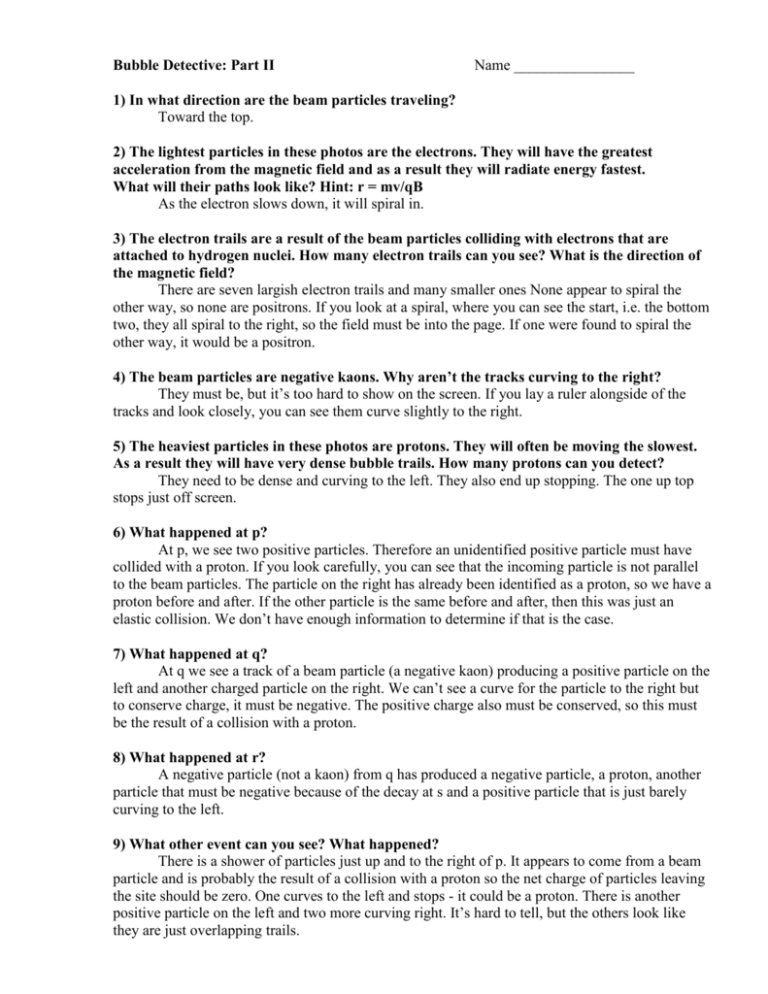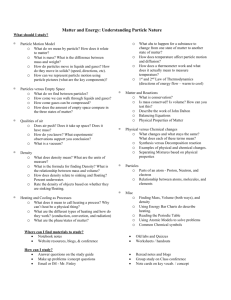Bubble Detective: Part II Name
advertisement

Bubble Detective: Part II Name ________________ 1) In what direction are the beam particles traveling? Toward the top. 2) The lightest particles in these photos are the electrons. They will have the greatest acceleration from the magnetic field and as a result they will radiate energy fastest. What will their paths look like? Hint: r = mv/qB As the electron slows down, it will spiral in. 3) The electron trails are a result of the beam particles colliding with electrons that are attached to hydrogen nuclei. How many electron trails can you see? What is the direction of the magnetic field? There are seven largish electron trails and many smaller ones None appear to spiral the other way, so none are positrons. If you look at a spiral, where you can see the start, i.e. the bottom two, they all spiral to the right, so the field must be into the page. If one were found to spiral the other way, it would be a positron. 4) The beam particles are negative kaons. Why aren’t the tracks curving to the right? They must be, but it’s too hard to show on the screen. If you lay a ruler alongside of the tracks and look closely, you can see them curve slightly to the right. 5) The heaviest particles in these photos are protons. They will often be moving the slowest. As a result they will have very dense bubble trails. How many protons can you detect? They need to be dense and curving to the left. They also end up stopping. The one up top stops just off screen. 6) What happened at p? At p, we see two positive particles. Therefore an unidentified positive particle must have collided with a proton. If you look carefully, you can see that the incoming particle is not parallel to the beam particles. The particle on the right has already been identified as a proton, so we have a proton before and after. If the other particle is the same before and after, then this was just an elastic collision. We don’t have enough information to determine if that is the case. 7) What happened at q? At q we see a track of a beam particle (a negative kaon) producing a positive particle on the left and another charged particle on the right. We can’t see a curve for the particle to the right but to conserve charge, it must be negative. The positive charge also must be conserved, so this must be the result of a collision with a proton. 8) What happened at r? A negative particle (not a kaon) from q has produced a negative particle, a proton, another particle that must be negative because of the decay at s and a positive particle that is just barely curving to the left. 9) What other event can you see? What happened? There is a shower of particles just up and to the right of p. It appears to come from a beam particle and is probably the result of a collision with a proton so the net charge of particles leaving the site should be zero. One curves to the left and stops - it could be a proton. There is another positive particle on the left and two more curving right. It’s hard to tell, but the others look like they are just overlapping trails.





